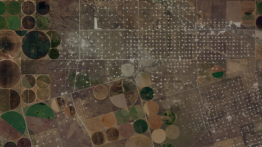Natural Gas

Natural Gas is a colorless, odorless mixture of hydrocarbon gases, primarily methane (CH4). The content of natural gas depends on the specific geology and composition of the site from which the gas was extracted.
The path of raw natural gas begins at the producing well. Before entering the U.S. natural gas mainline transmission system, made up of about 1.5 million miles of distribution pipelines that link production areas and natural gas markets, it must first be purified at a natural gas processing plant or “fractionator.” The U.S. natural gas transportation network delivered more than 23 trillion cubic feet of natural gas during 2008 to about 70 million customers.
Energy from natural gas accounts for 24% of the U.S. total energy consumption, compared to 39% from petroleum products, 23% from Coal, 8% from Nuclear and a mere 6% from all renewable energy sources combined.
Hydraulic Fracturing
What is referred to as High Volume, slick-water, multi-stage Hydraulic Fracturing and horizontal drilling (HVHF) was introduced in 2002, and is the most important process in the current discourse about gas and oil extraction.




